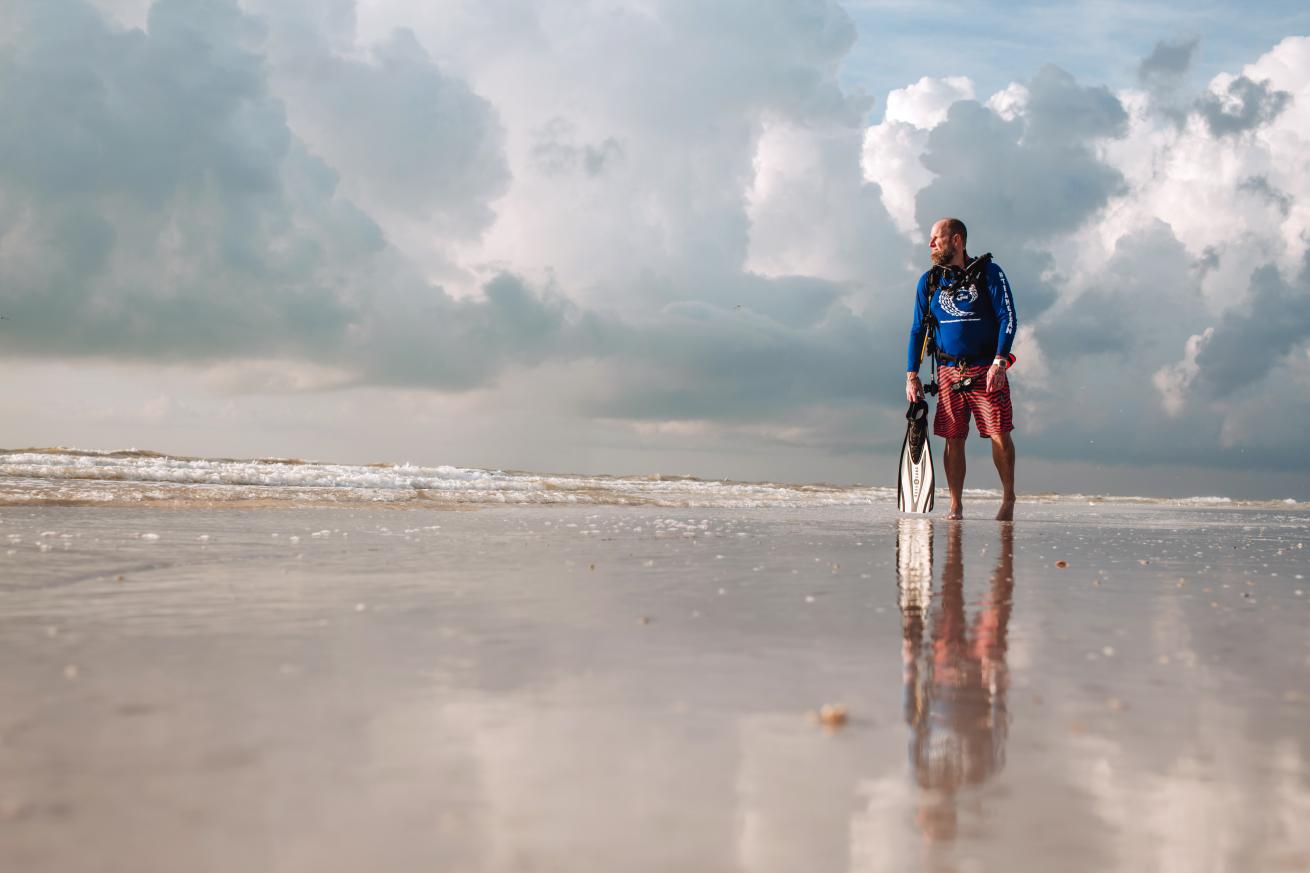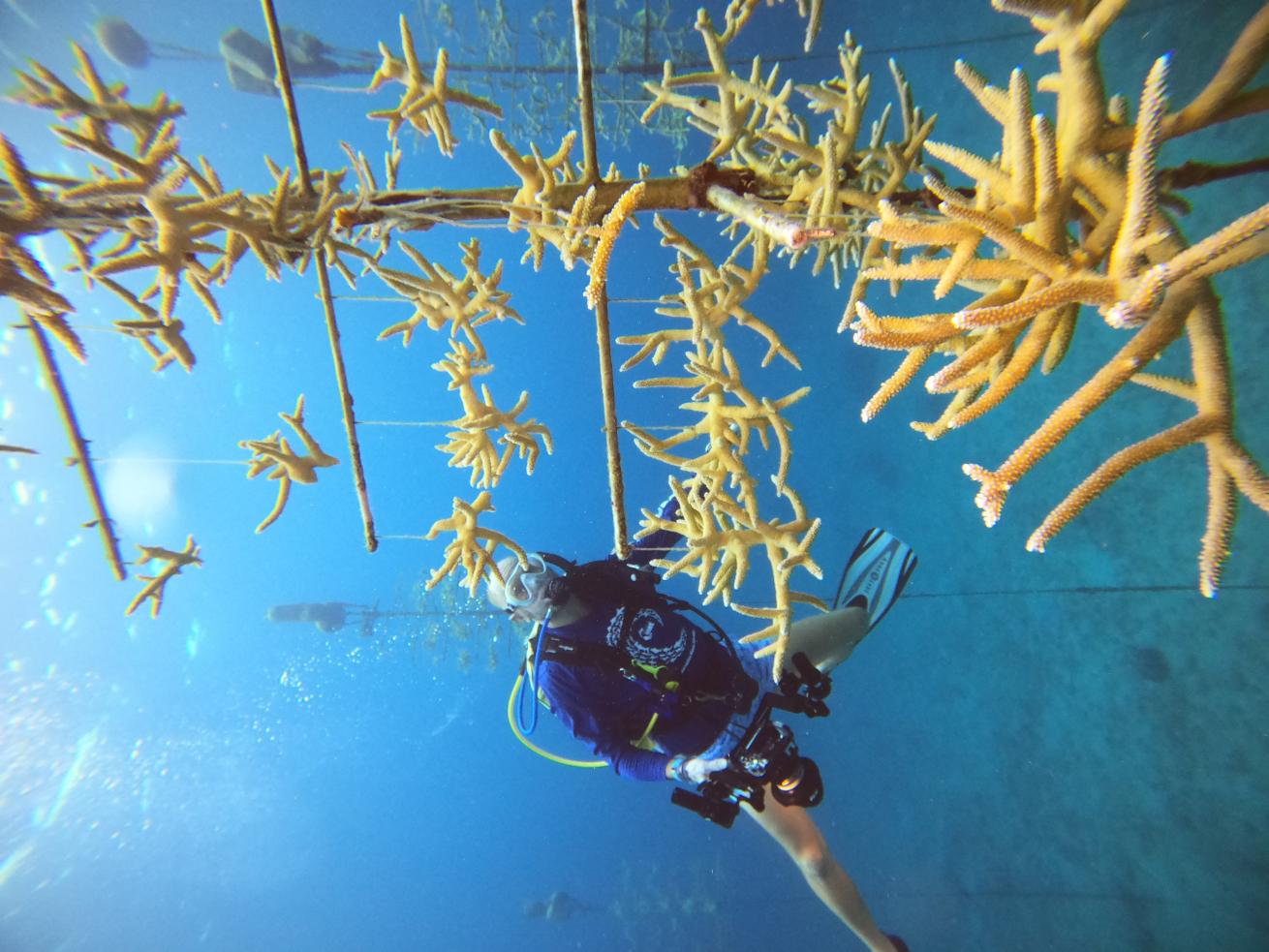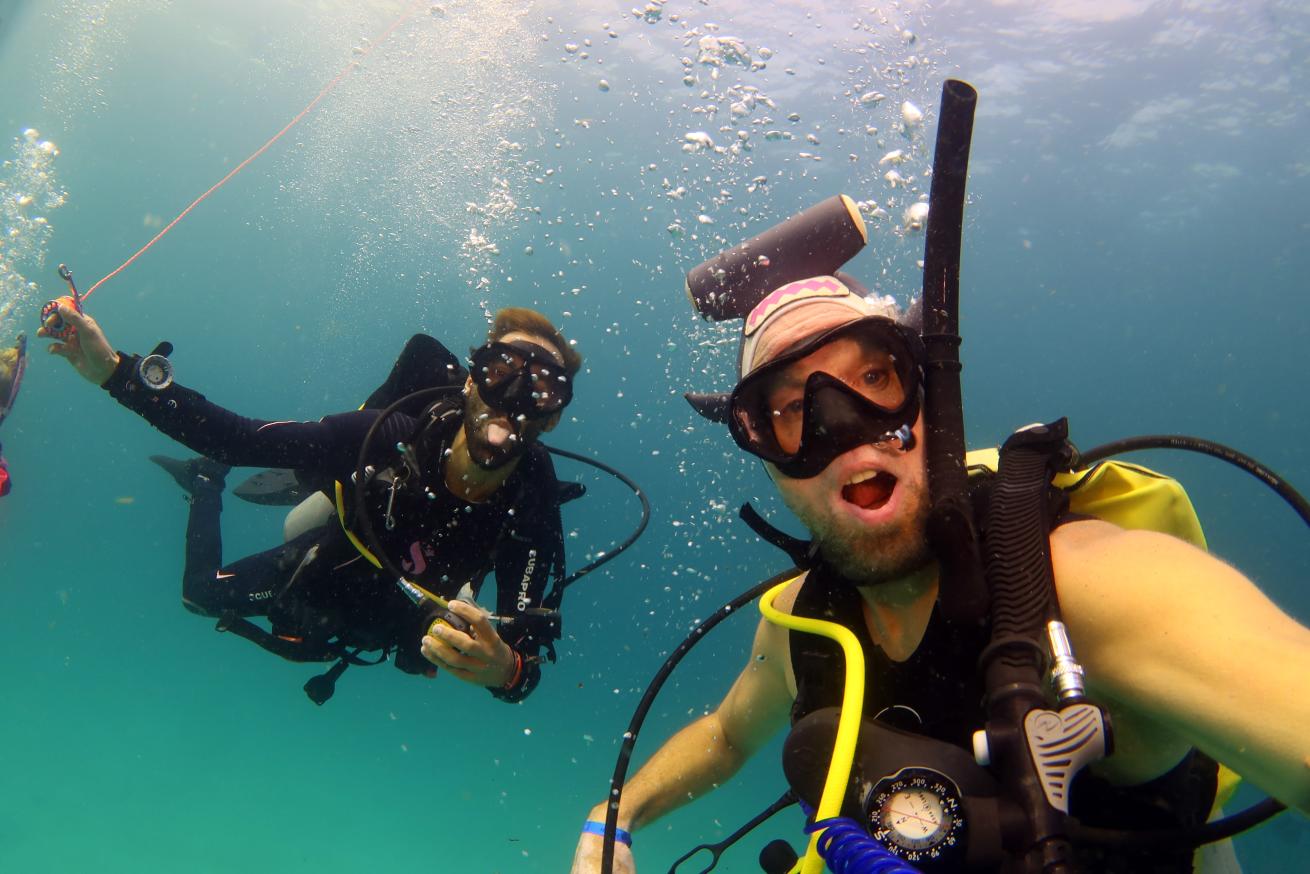Hands-On Diving: American Sign Language in the World of Scuba

Claire Cassidy PhotographyPADI’s first deaf course director Thomas Koch has a goal to see the growth of Deaf divers.
In a word, Thomas Koch is unstoppable. In his first three years as a PADI Open Water Scuba Instructor, Koch introduced more than 300 people to the sport. To date, that number is 1,120. He’s on a mission to certify as many deaf people as possible through his Florida-based company, Aqua Hands. Koch welcomes deaf and hard of hearing people to a world where they hold the advantage. With every dive trip he leads, traveling with hearing and non-hearing divers alike, the more Koch recognizes that hearing divers could learn a thing or two from American Sign Language, aka ASL. His next mission is to teach more hearing divers the diver basics of ASL words and phrases so they, too, can become part of this bigger conversation.
Scuba is perfect for deaf people, but you’ve said that some people in the deaf community face pushback getting certified. Why?
We still have some people who think deaf shouldn’t dive. That’s audism. Just last week, I received a Facebook message from a deaf diver in China who couldn’t get his doctor to sign off on the medical waiver.
What is audism?
It’s the oppression of deaf individuals. Audism is another form of oppression. Although each ism is unique in the way it oppresses/discriminates, audism specifically discriminates against deaf people based on their inability to hear. This is not to suggest that it has the same impact as sexism, heterosexism or racism. It means that it is another ism specifically experienced by those of us who are deaf and hard of hearing.
You’ve mentioned that dive boat discrimination is common. What have you had to deal with?
Just one example: On a boat in Grand Cayman, the family onboard spoke with the divemaster, telling him that my friend Angela–also deaf–and I should not be diving. I showed them my PADI Rescue Diver card. The divemaster backed down, but the dad still disapproved. After the first dive, he apologized so many times I lost count. Then for the whole week, he kept treating us to drinks.
It seems that hearing people sometimes need time to understand why deaf people excel underwater.
When hearing people go underwater for the first time, they suddenly realize they can’t talk because they have a regulator in their mouths. Not everyone ‘gets it’ right away.

Douglas MatchettKoch leads Aqua Hands organized trips to locations such as Roatan, Honduras.
What inspired you to become an instructor?
I became PADI Divemaster in 2008. Of course, the instructor was showing skills and all of that, but I was the one who had to translate so that my deaf friends could understand. After that class, the instructor said, “Why don’t you become an instructor?” So I did in 2010.
By the numbers?
To date, I have certified 1,120 people. Of those, 75% are deaf divers and 25% are hearing. I’ve certified divers from all over the USA and even Europe.
When you are teaching new students, you don’t have to surface to explain directions. How does this shape a diver?
When I teach hearing people, we might be underwater for no longer than five to seven minutes. With deaf people, I stay under for 45 minutes usually. So the deaf people are already comfortable staying underwater for a far longer time compared to hearing people, based on my experience.
Your ability to problem-solve underwater goes far beyond that of most instructors. Tell us about that.
My student, Jennifer Void, said, "On one dive, I started to ascend too fast and my ears started to hurt. I knew to go back down slowly until my ears felt better, but unfortunately went too far down too fast. The pain increased, and just when I started to have a hint of panic, Tom was already by my side, bringing me to the right depth, telling me what to do. He was able to communicate clearly and calmly since we both use ASL. I don't know what I would have done if I had a hearing instructor who didn't know how to sign. I watched other divers on our trips, trying to gesture to communicate underwater and felt bad for them. With Tom, he could tell us about the fish and plants, and he gave us detailed instructions and tips on how to improve our skills.”
You started Aqua Hands, a dive company for deaf people. Why?
I just want to have fun with my friends and bring more of them to the amazing underwater world.
With the Aqua Hands dive trips, where have you been?
We are going to the Red Sea this June and to the Bahamas this July. Every year, we run three to four trips. Cat Ppalu is one of the best trips we’ve done, and that’s an easy trip for me to fill because it’s so popular. We’ve also done the Turks and Caicos Aggressor II.
You are the first deaf PADI Course Director. Tell us about this.
I had always wanted to meet James Morgan, a VP at PADI. In 2013, I was at DEMA when I found out that he wanted to meet me. At the time, I had already certified 300 people in three years. He told me to aim higher and become a course director. Since then, I have been certifying deaf Open Water Scuba Instructors, which really increases the number of deaf divers worldwide.

Thomas KochThomas Koch inspires a divemaster to learn ASL after diving together in Playa del Carmen, Mexico. The two remain friends to this day.
You’re advocating for a new form of sign language that you call Underwater Sign Language or UWSL. Tell us which signs you think hearing divers need to know.
I do not just teach the PADI 25 signals. I teach additional signs, including breathe long, slow down, fish (signs for specific fishes), wreck (not boat), beautiful, alright, I’m done (cold when we dive either Blue Grotto or Devil’s Den. Ha).
Wait. There’s a sign for a wreck?
In ASL, the sign for a wreck is your fist hitting the palm of your hand. Accordance to PADI signals, there’s only boat–no wreck.
In fact, turns out hearing folks are not only missing out on a bigger vocabulary, but they’re also using some offensive words down there. When we think we’re signing ‘shark’ what are we really sighing in ASL?
You’re having entire conversations down there. What do you chat about?
We talk about football, baseball and what we want to go for lunch after the dive.
So what do you talk about after the dive?
On every dive trip, when we have hearing people on the dive boat, we, the deaf divers, are the quiet ones because we already talked about it all underwater.










